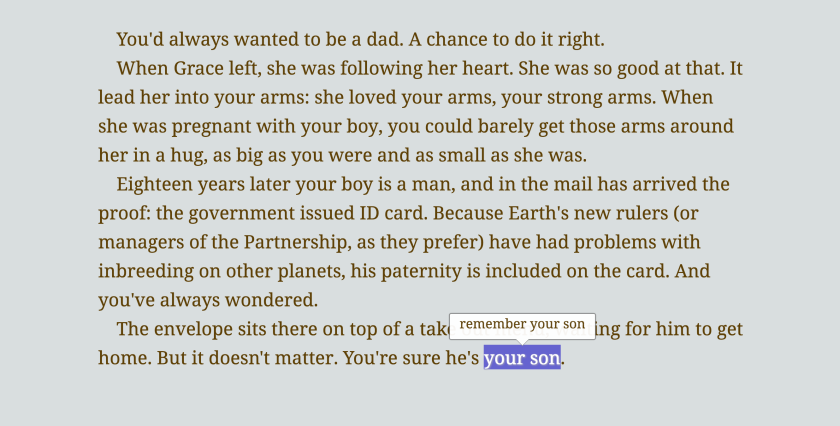 I spoke to Liza Daly about her 4th-place IF Comp 2016 entry Stone Harbor. In full disclosure, Liza is a friend, and we have worked together in the past; she commissioned me to write First Draft of the Revolution.
I spoke to Liza Daly about her 4th-place IF Comp 2016 entry Stone Harbor. In full disclosure, Liza is a friend, and we have worked together in the past; she commissioned me to write First Draft of the Revolution.
On this occasion, she was kind enough to talk with me about where her project came from, her ambitions for IF in general, and how she sees interactive fiction relative to the world of publishing and ebooks—including some thoughts on why interactive ebooks didn’t become the cutting edge of interactive fiction.
What were your goals for the Stone Harbor project when you got started?
I work in publishing, and I’ve long been frustrated by how little awareness there is of interactive fiction, or born-digital writing in general, in the publishing community. At best, people think it’s all Choose Your Own Adventure books, or Zork, or navel-gazing avant-garde experiments, or big-budget apps like Arcadia. The objections I’ve heard about IF range from “those are for kids” to “they’re games not stories” or “they cost thousands of dollars to make.” So on one level my goal was to write a relatively conventional genre story—something publishers could could recognize—cheaply and quickly.
Meanwhile my personal projects tend to be short or abstract: Twitter bots or computer-generated “novels” that are devoid of meaning. I wanted to see if I could do the hard work of writing believable characters and sustaining a storyline.
Both goals pulled Stone Harbor in the direction of being longer (by word-count) and less branch-y than is typical for IF Comp entries. I hoped that it would be received as “minimally interactive” rather than “slapped-on interactive,” but I think it’s a fair criticism that I could have made the interactivity deeper without compromising the story-ness. I’m inspired to do better next time.




